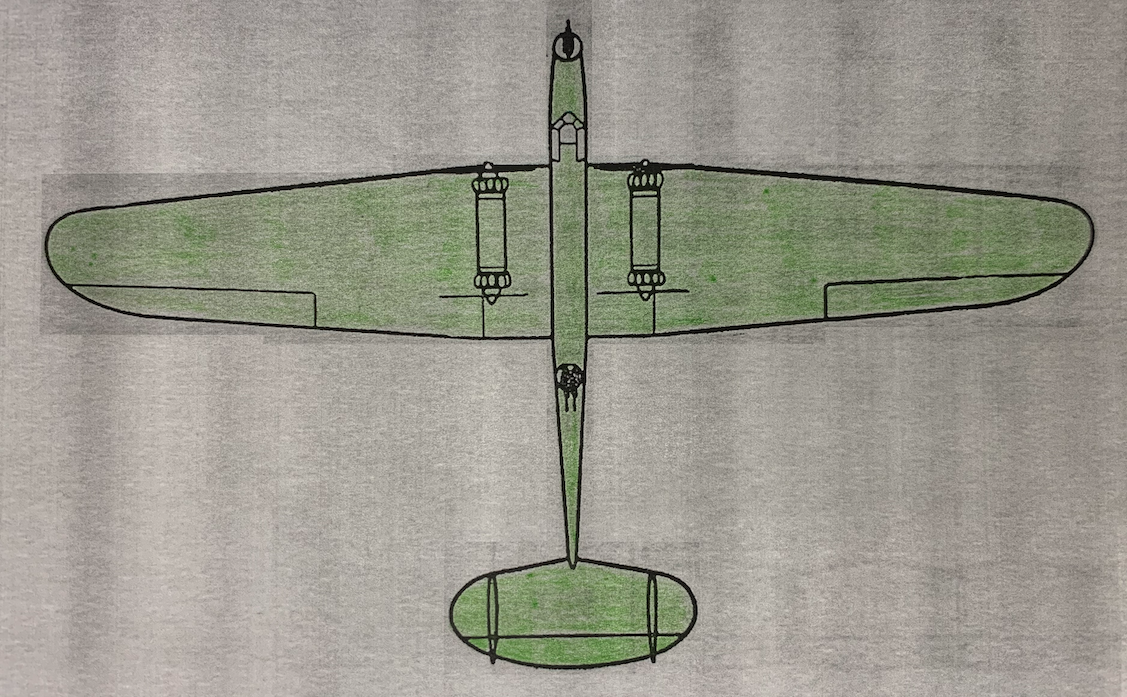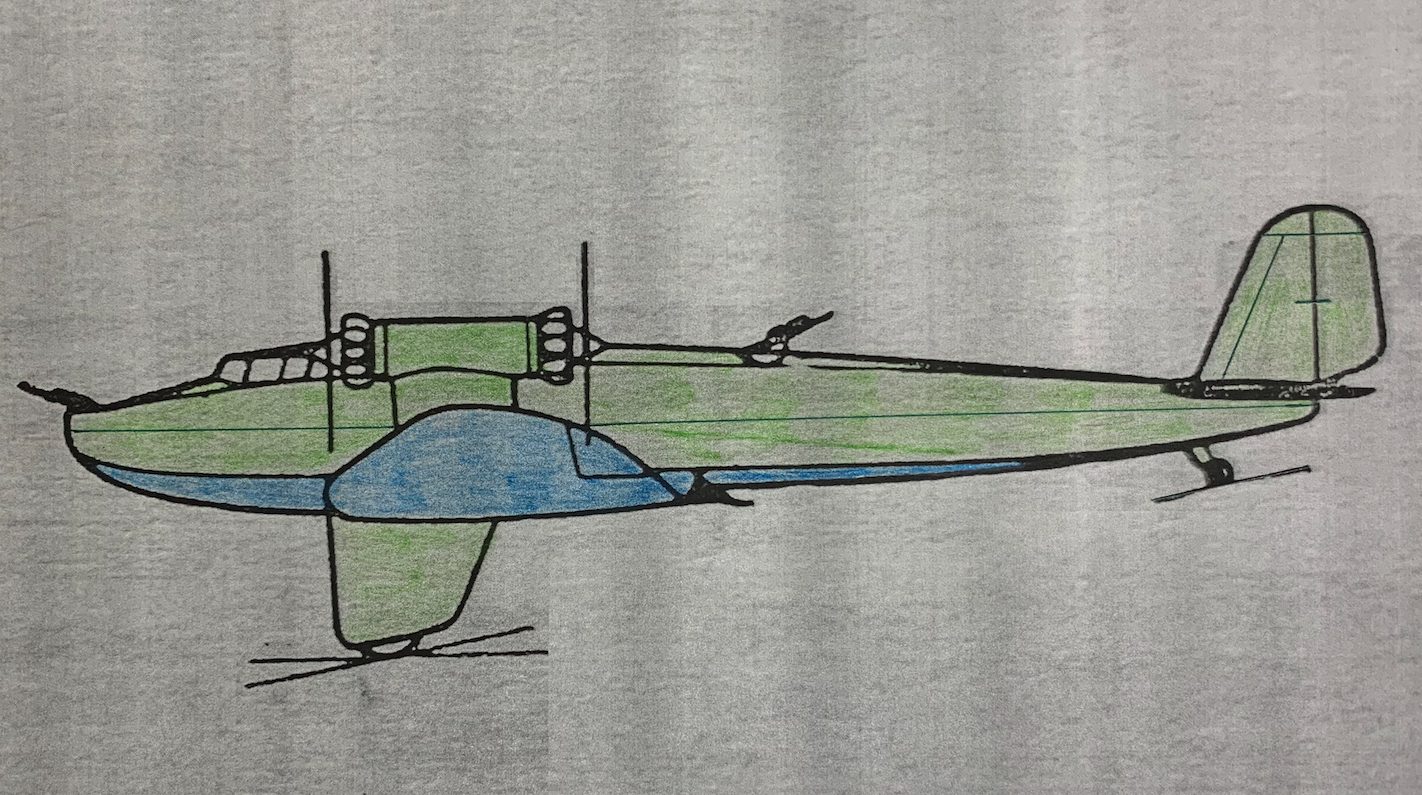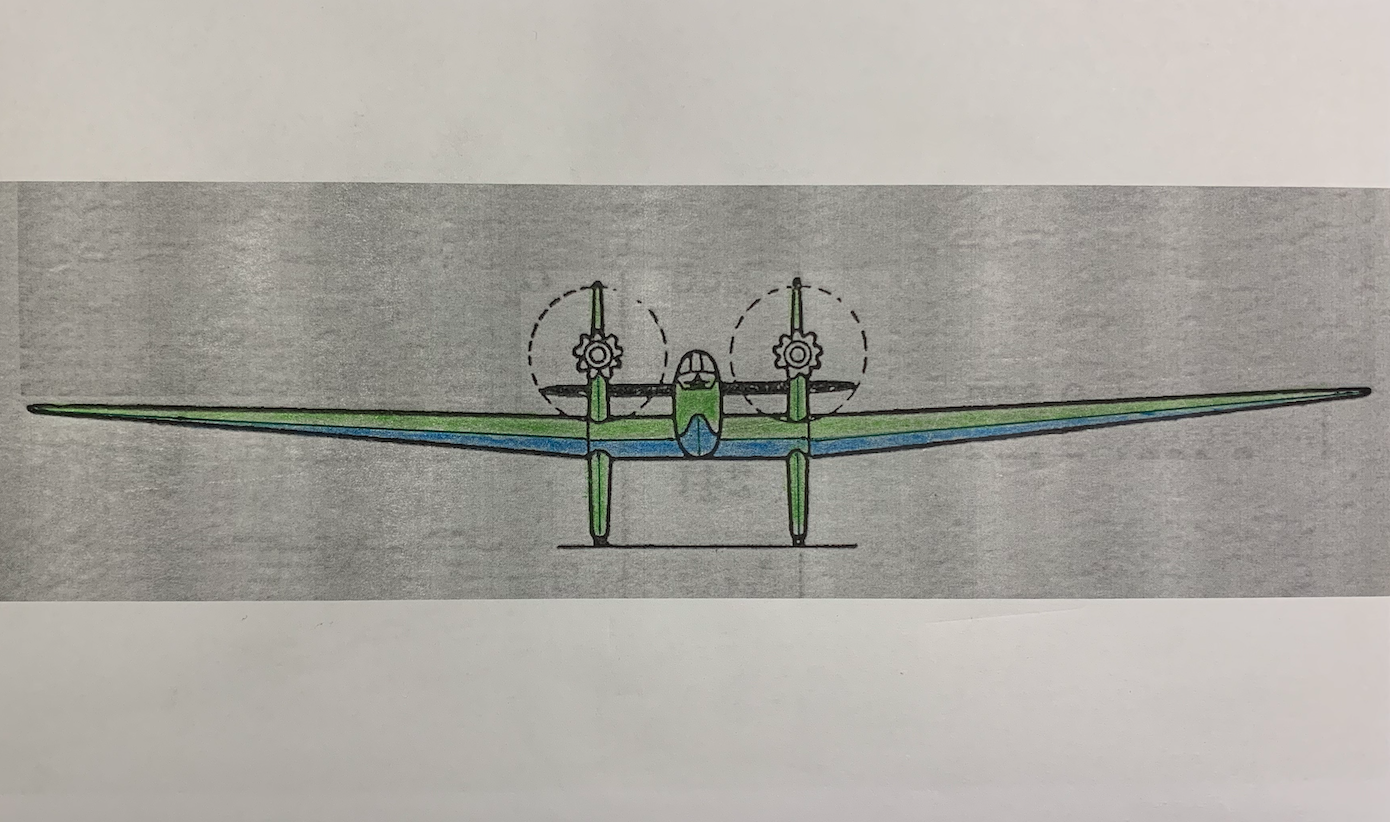Kraków 2021-11-15
PZL-3 bomber plane project.
The PZL-3 was an interesting design for a heavy bomber that was to be powered by four piston engines.
In 1928, the Aviation Department commissioned the newly established State Aviation Works in Warsaw to develop a heavy, multi-engine night bomber. The plane was to be able to use field airfields. It was planned to build as many as 100 copies.
Detailed design assumptions for the aircraft were developed by engineer Władysław Zalewski. The plane was a development of the WZ-IX Pteranodon project. The PZL-3 aircraft was carefully aerodynamically designed. Tests of the aircraft models in the wind tunnel confirmed the correctness of the design. The test results were surprised even by members of the French mission who visited the Aerodynamic Institute in Warsaw at that time. The airframe was to be completely metal. The plane featured several modern solutions that made the project at the forefront of this type of design.
Four Bristol Jupiter radial engines with 4 x 520 hp (4 x 383 kW) are provided for the drive. The engines were placed in two tandems on outriggers above the wing. It was at that time a very popular system used in many aircraft structures. This system has the disadvantage that the second engine was usually less cooled and could overheat. Therefore, engineer Władysław Zalewski decided to place the engine cylinders outside the nacelle. It was planned to surround the engines with a ring around Townend. A hatch was installed in the sides of the fuselage, through which the mechanic would have access to the engines during the flight for minor repairs.
The flight crew was to consist of six airmen. The plane was equipped with three defense stands. The first position is located in the nose of the plane, with one machine gun. The second position was placed on the back of the plane. They were equipped with two machine guns placed on a turntable. The third position was placed in the lower part of the fuselage, equipped with one machine gun. It was planned to use a mechanism that could move the firing point downwards only while it is in use. It was an innovative solution. It was planned to use Lewis machine guns.
The fuselage has a bomb bay that can hold 20 100 kg bombs.
The plane was to receive a fixed landing gear with a tail skid or a wheel. Main undercarriage consisting of single large diameter wheels. The legs and wheels were covered with large fairings, which created additional retrograde surfaces. There was a danger that the wheel chambers could become clogged with earth and clay when using the makeshift landing pads.
Work on the plane was discontinued in 1930, without building a prototype.
Despite encouraging results and good opinions of experts, no loan was granted even for the construction of a prototype. There were several reasons. Among other things, the change in the military doctrine, the world crisis and the lack of prospects for the export of the aircraft. It is not true that there was a complete lack of funds. At that time, a license to manufacture Fokker F-VII / 3 aircraft was purchased. Simply lower risk was chosen. The engineer Władysław Zalewski left the PZL plant in protest. One should not be surprised by his decision, after all, all the projects created at PZL at that time, for example, had a prototype built. Nay. The French from Potez used the solutions used in PZL-3. The Potez XXV plane was manufactured in Poland. During the French visit to Poland, they became interested in the PZL-5 project. At the end of 1933, the French built the Potez 41 BN-4, which is very similar to the PZL-3.
Władysław Zalewski, an engineer, started designing tourist airplanes and low-power aircraft engines for amateur constructions.
Planned data of the T-T PZL-3:
Span 36.0 m. Length 22.0 m. Total height 6.20 m. Bearing area 170 m2. Curb weight 7 500 kg. Gross weight is 12,000 – 12,500 kg. Top speed 280 km / h. Bomb load 2,000 kg. Capacity 3,000 kg.
Written by Karol Placha Hetman



